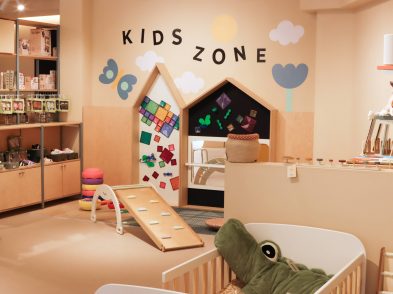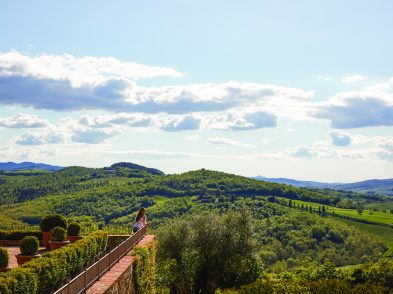Florence is famous for its leather goods, from shoes and accessories to clothing. But with so many stores and so much to choose from, how can a buyer be sure of making a good choice?We went to the Casini leather stores in Piazza Pitti and asked designer Jennifer Tattanelli to give us some guidance about buying lea-ther garments.
Jennifer, we see many different prices for leather, and have so many choices. What is the difference?
The difference is in the materials and labor.
You can find many garments at a low price but they are not all well constructed or made with high-quality leather. They are made with inexpensive leather, thread and lining and are produced quickly, sewn in “assembly line” process.
For example, a jacket can be produced in about two hours, and its zipper might cost 25 cents. At my factory, we would spend over six hours making the same type of jacket. We use only the finest quality nappa leather, an exquisite and durable lining, strong thread and fine buttons or zippers. In fact, the zipper alone might cost 6 euro. The garments are meticulously cut and hand sewn one by one. Yet for the quality my prices are reasonable because I produce my own.
Compare items and don’t be afraid to ask questions about material or production. I believe in informing my clients so they can trust me to help them make the right decision.
Well, let’s get started. How can we distinguish quality leather?
First off, smelling the leather will not tell you about its quality: a scent can be added to the leather. Also, you don’t tell good leather by placing a lighter or a match to the leather—that’s all theatrics for tourists. But identifying quality is not as difficult as it may seem. Feeling it is the best way. Leather should be soft to the touch. Squish the leather in your hand: it should pop right back. Hold it, so you can feel that it is lightweight, like a piece of material.
How can we tell if the garment is well made?
The real test of quality is in the details—inside and out. Look at the handstitching, the buttons and zippers. And try it on. If it is a reversible item, which is difficult to cut and make because it is one piece of leather treated on both sides, the garment should not feel heavy and bulky. It should be soft and wearable next to your skin.
What if I can’t find a good fit?
‘Custom made’ service is very rare. Few stores can offer this. A new pattern has to be made and cut. I can custom make garments because I have my own factory. And I strongly believe in the concept—it is one of my specialties. Not everyone fits perfectly into a standard size, but if you are purchasing a very nice garment in leather, you deserve the right fit.
If you have a garment made, choose only the best leather and make sure your measurements are taken precisely. If you want a reversible jacket or coat, be especially certain that the fit is correct.
Tell us about the different kinds of leather and quality: What is nappa? Pieno fiore? What is tinto sul capo?
It depends on whether you are talking about leather for shoes, wallets or garments. Nappa is a soft leather for garments. A wallet made of nappa would fall apart, so we use a stronger leather. Pieno fiore is the softest leather. Note the pores. Tinto sul capo is an old concept that has been brought back in the last six or seven years as a way to give a vintage look to a new item. It appears used but isn’t. First the raw leather is cut into the garment pieces. Once it is sewn with its lining, zippers and buttons, then it is dyed. Only after that does it get washed.
Tell us more about the process of making a high-quality leather garment.
There is much more work behind a high-quality product, and it involves many people. Along with craftsmanship and hand finishing, we use business analysis, fashion design and research. For example, we follow market trends, colors and styles. To follow new techniques, we work with a chemist in our factory. And we keep up with the technology. The new laser treatment is exciting. A motif is designed on a computer then transferred to the leather. The initial cost is very high, but the outcome is spectacular!
Can we come back and ask more about trends in leather and other areas of Italian fashion?
Any time! It would be a pleasure. I believe we are all beautiful: fashion is about bringing out the beauty in us through our image. I’d be delighted to help along the way.
To learn more ‘knowledge’ about leather and style, go to website: www.casinifirenze.it








